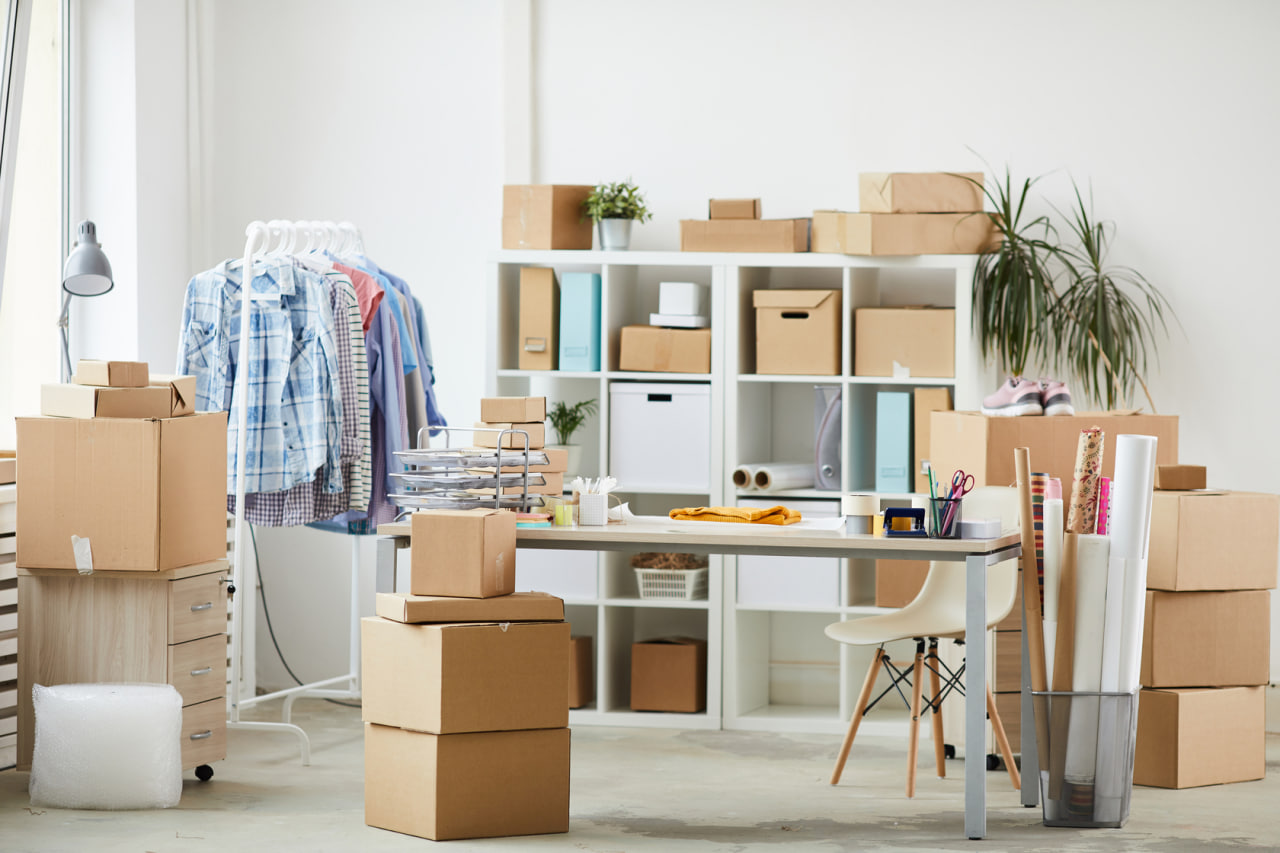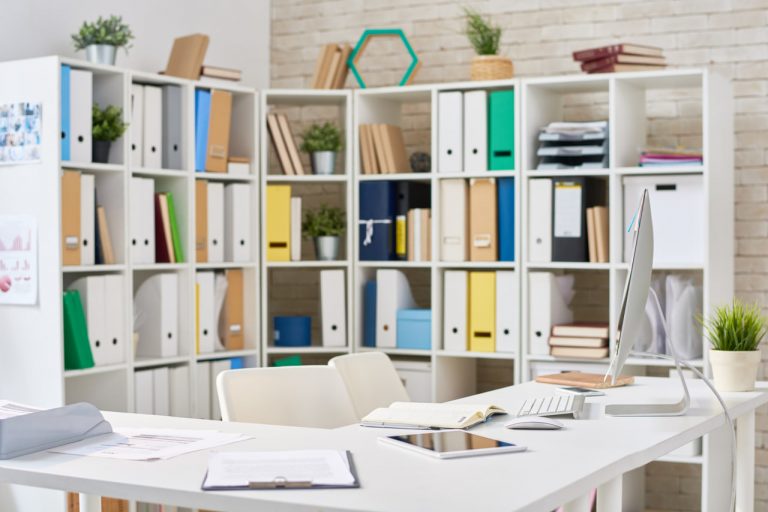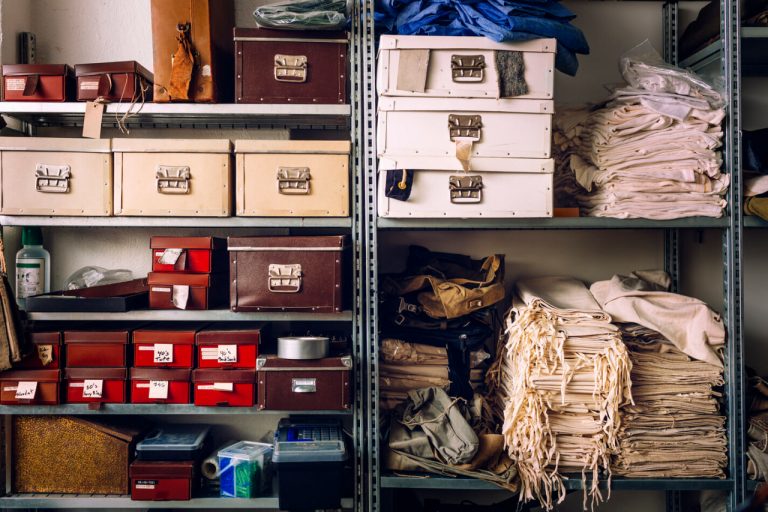Living in a small space doesn’t mean you have to sacrifice style, comfort, or organization. Whether you’re in a tiny apartment, a cozy studio, or a home with limited square footage, maximizing your storage is key to making the most of your space. In fact, with the right strategies, small spaces can feel open, functional, and even spacious.
In this blog, we’ll explore creative storage solutions that will help you declutter and organize your home while maintaining a stylish and functional environment. These tips will help you make the most of every square inch, turning your small space into a haven of order and peace.
1. Use Vertical Space for Storage
One of the most effective ways to maximize storage in a small space is to take advantage of the vertical space around you. When floor space is limited, think about how you can use the walls to store and organize items. Vertical storage helps you keep everything you need within reach while still leaving the floor open.
Here are a few ideas for utilizing vertical space:
- Install Wall Shelves: Wall-mounted shelves can hold books, decor, kitchen essentials, and even small appliances. The more shelves you add, the more storage space you’ll create.
- Use Pegboards: Pegboards are a fantastic option for organizing tools, kitchen gadgets, or office supplies. They can be customized with hooks and shelves to hold a variety of items, all while staying off the counter or floor.
- Tall Cabinets: Invest in tall, slim cabinets that make use of the height of your room. These can be used in kitchens, bathrooms, or living rooms to store everything from dishes to toiletries or books.
- Hanging Racks and Hooks: Hooks and racks on walls or the backs of doors can hold everything from coats to bags to towels. They take up minimal space while offering maximum functionality.
By looking up, you can find the storage you need without giving up precious floor space.
2. Multi-Functional Furniture
In small spaces, furniture needs to do more than one job. Multi-functional furniture pieces not only save space but also reduce the clutter that can accumulate when you’re trying to store things. Here are a few examples of furniture that can serve multiple purposes:
- Sofa Beds: A sofa that turns into a bed is ideal for a studio apartment or a small guest room. It provides seating during the day and a comfortable bed at night, saving you the need for a separate sofa and bed.
- Storage Ottomans: Ottomans that double as storage units are perfect for small living rooms. Use them to store blankets, remote controls, or magazines, and they also serve as a place to put your feet up.
- Convertible Tables: Folding dining tables or extendable desks are great for saving space. When not in use, you can fold them up or shrink them down, opening up the room.
- Under-Bed Storage: Beds with built-in drawers or lofted beds that allow you to store things underneath are perfect for bedrooms with limited space. Use the area under your bed to store seasonal clothes, extra bedding, or storage bins.
Multi-functional furniture helps keep your home organized without sacrificing comfort or design.
3. Maximize Closet and Storage Space
Closets are often the most underutilized areas in a small space. They can quickly become a dumping ground for everything you don’t know where to store. To get the most out of your closets, you need to approach them with a strategic mindset.
Here are a few ways to maximize closet and storage space:
- Use Shelf Dividers and Bins: Install additional shelves inside closets to organize shoes, folded clothes, or bags. Clear bins or baskets can help keep smaller items organized, such as scarves, hats, or cleaning supplies.
- Add Hooks and Racks: Hooks on the inside of closet doors or on the wall can be used to hang accessories, bags, or belts. This is a great way to store things without taking up valuable shelf space.
- Invest in Closet Organizers: Use hanging organizers for shoes, scarves, or even towels. Closet rods with double rails can double your hanging space for shorter clothing items like shirts and pants.
- Declutter Regularly: A closet can only store so much before it becomes overcrowded. Regularly donate or sell clothes that you no longer wear to make room for the things you use regularly.
By organizing your closet smartly, you can fit a lot more into the space you have, making it a functional and accessible area.
4. Utilize Hidden Storage Solutions
Sometimes, the most effective storage solutions are those that are hidden from view. Hidden storage lets you store things out of sight while keeping your space clean and organized. Here are a few options for creating hidden storage in your small space:
- Under-Furniture Storage: Use the space under your furniture for storage. Invest in storage bins or baskets that can slide under your couch, bed, or armchair. This area is perfect for stashing seasonal items or things you don’t need to access regularly.
- Ottoman Storage: As mentioned earlier, ottomans with hidden storage are an excellent way to stow away blankets, magazines, or remote controls. Choose one that doubles as both a functional piece of furniture and a clever storage solution.
- Lift-Up Tables: Some coffee tables or dining tables come with lift-up tops that reveal hidden storage beneath. These are great for keeping items like board games, extra pillows, or electronics tucked away.
- Hidden Cabinets: Install cabinetry or shelving behind sliding panels or under stairs. These hidden compartments are perfect for stashing away things you don’t need to access daily but still want to keep organized.
Hidden storage creates a neat, streamlined look while ensuring everything has a place.
5. Embrace Minimalism
When you’re working with a small space, one of the best ways to maximize storage is to minimize what you own. Less is more in a small home, and adopting a minimalist approach can significantly improve both your storage and your quality of life.
Here’s how you can embrace minimalism:
- Reduce Clutter: Go through your belongings and be honest about what you need. Anything you haven’t used in the last six months or a year can be donated, sold, or thrown away. The less you have, the less you need to store.
- Opt for Quality Over Quantity: Instead of buying items in bulk or accumulating things just because they’re on sale, invest in higher-quality pieces that will last longer and take up less space.
- Digitize: Where possible, reduce physical items by going digital. Store documents, photos, and even books on your computer or in the cloud, freeing up space in your home.
The less stuff you have, the easier it is to organize and maintain a clutter-free environment.
6. Vertical Gardens and Greenery
Bringing plants into your home can add life, vibrancy, and even functionality. For small spaces, consider vertical gardening solutions, which allow you to incorporate greenery without taking up valuable floor space.
- Wall-Mounted Planters: Use wall-mounted planters or shelving units to hold your plants. This is a great way to add greenery without losing floor space.
- Hanging Baskets: Hanging baskets from the ceiling or hooks can create a stunning display of plants while keeping your surfaces clear.
- Small Indoor Garden: Create an indoor herb garden or small vegetable garden that fits on a windowsill, balcony, or shelf. This will maximize your space while providing fresh ingredients.
Incorporating plants not only saves space but also enhances the overall aesthetic of your home, making it feel more inviting and peaceful.




